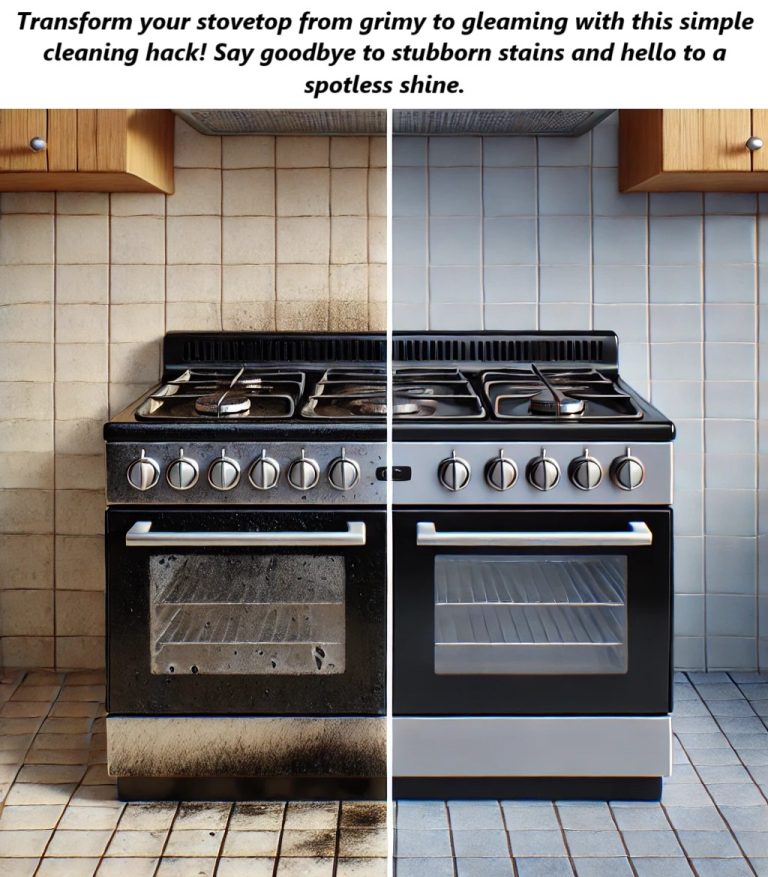ADVERTISEMENT
ou begin cleaning. This is important to prevent burns and protect the finish of your stovetop.
Step 2: Remove the Grates and Burner Caps
If you have a gas stove, remove the burner grates and caps. These parts tend to accumulate grease, spills, and crumbs, so they need to be cleaned separately. Set them aside and soak them in warm, soapy water while you clean the rest of the stovetop.
For electric stoves, remove any removable burner coils or covers.
Step 3: Wipe Down the Surface
Use a damp microfiber cloth to wipe down the entire stovetop. This will help loosen up any surface debris like crumbs or small food particles. Focus on areas with visible dirt or grease spots. You don’t need to scrub yet; this is just to get rid of any loose mess before applying a deeper cleaner.
Step 4: Apply a Degreaser or Baking Soda Paste
For stubborn grease and grime, apply a degreaser or make your own cleaning paste with baking soda and water. Mix a few tablespoons of baking soda with a little water to create a thick paste. Apply it to the greasy spots on your stovetop and let it sit for about 15 minutes to loosen the grease.
Alternatively, if you prefer a natural solution, spray white vinegar onto the surface. The combination of vinegar and baking soda works wonders for breaking down grease. Let the vinegar sit for a few minutes before scrubbing.
Step 5: Scrub Away Stubborn Grime
Now it’s time to get scrubbing! Use a non-abrasive sponge or soft cloth to gently scrub the surface. For tougher spots, use a plastic scraper to lift off stuck-on food particles. Be careful not to scratch the surface of your stovetop. For hard-to-reach areas like around burners, use a soft toothbrush to get into the nooks and crannies.
Step 6: Clean the Burner Grates and Caps
While the stovetop is soaking, it’s time to clean the burner grates and caps. If you soaked them in warm, soapy water, most of the grease and grime should be loosened. Use a sponge or scrub brush to clean them thoroughly.
For any stubborn food residue, sprinkle a little baking soda on the grates and scrub with a sponge. If needed, use a toothbrush to reach smaller crevices. Once clean, rinse the grates and burner caps with warm water and dry them with a clean cloth.
Step 7: Wipe Down and Dry the Stovetop
After scrubbing, wipe the stovetop clean with a damp cloth to remove any leftover cleaning product. Dry the surface with a towel or paper towels to avoid streaks. For an extra shine, you can wipe down the stovetop with a vinegar-soaked cloth or a microfiber cloth to give it a glossy finish.
Step 8: Reassemble the Stove
Once the grates, burner caps, and stovetop are dry, carefully place the grates and caps back in place. Make sure everything is securely positioned and ready for use.
For Complete Cooking STEPS Please Head On Over To Next Page Or Open button (>) and don’t forget to SHARE with your Facebook friends
Additional Tips for Keeping Your Stovetop Clean
- Clean Spills Immediately: The best way to keep your stovetop looking new is to clean up spills right after cooking. Use a paper towel or cloth to quickly wipe away any food or grease before it has a chance to harden.
- Use a Stovetop Protector: Consider using a stovetop protector or burner covers to catch spills. These are easy to remove and clean, reducing the amount of work required to maintain a clean stovetop.
- Avoid Abrasive Cleaners: Never use harsh, abrasive cleaning products like steel wool pads or rough scrubbing brushes, as they can scratch the surface of your stovetop. Stick to non-abrasive sponges and cloths for the best results.
- Regular Maintenance: Make stovetop cleaning a part of your regular kitchen cleaning routine. Cleaning your stovetop once a week (or more often if needed) will prevent grease and grime from building up and make deep cleaning easier.
- Stainless Steel Stovetop Care: If you have a stainless steel stovetop, be sure to clean it with a cleaner specifically designed for stainless steel to maintain its shine. After cleaning, you can buff it with a little olive oil on a cloth to add a nice sheen.
- Use Cooking Spray for Easier Clean-Ups: Consider using a non-stick cooking spray or oil diffuser to prevent food from sticking to your stovetop in the first place. This can help reduce the mess during and after cooking.
Final Thoughts: Keep Your Stovetop Gleaming with Minimal Effort
A clean stovetop not only improves the aesthetic of your kitchen but also makes cooking more enjoyable and safer. By following these simple steps, you can transform your stovetop from grimy to gleaming and keep it looking new with minimal effort. Regular cleaning, combined with a few simple tips, will help maintain a sparkling stovetop that’s ready for whatever delicious dish you want to cook next.
So, the next time you finish cooking, take a few minutes to clean up—your stovetop (and your kitchen) will thank you!
